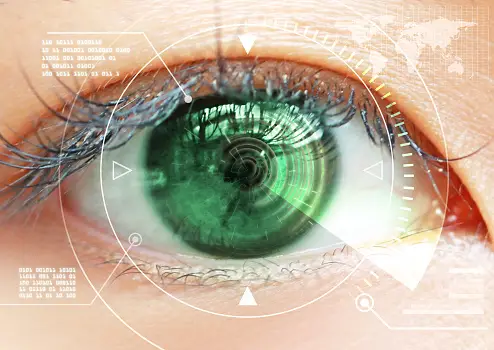More than a quarter of the world’s population experiences some level of visual impairment. Myopia (nearsightedness), hyperopia (farsightedness), and astigmatism are among the refractive vision defects that can be corrected surgically with Laser-Assisted In Situ Keratomileusis (LASIK). LASIK has become so popularized in today’s culture, finding a doctor that performs LASIK near you is as easy as searching Yelp or asking your primary care provider for a referral.
Since its beginnings, LASIK has developed significantly thanks to cutting-edge medical technology and surgical methods. These advancements have increased the procedure’s safety, accuracy, and predictability while also broadening its application to more severe visual impairments.
We will examine the most recent and cutting-edge innovations in LASIK surgery in this article, shining light on the developments that have driven this vision correction technique into the future.
Wavefront-LASIK (Custom LASIK)
Wavefront-LASIK, sometimes referred to as custom or customized LASIK, a significant advancement in laser vision repair. Traditional LASIK methods frequently failed to address specific corneal abnormalities since they relied on the patient’s eyeglass prescription. By measuring and mapping both lower and higher-order aberrations, wavefront technology creates a precise three-dimensional representation of the complete optical system.
The laser system is then guided by this data with unmatched precision to reshape the cornea and treat visual problems. Customized LASIK offers a specialized treatment plan made specifically for the patient’s eyes, improving visual outcomes and lowering the possibility of postoperative problems.
Femtosecond Lasers
By removing the need for a microkeratome blade, femtosecond lasers have transformed LASIK surgery, resulting in a procedure known as bladeless LASIK or femtoLASIK. With the use of this cutting-edge technology, surgeons can make corneal flaps with more accuracy and adaptability.
The surgeon can lift and fold back the corneal flap by using the femtosecond laser because it causes tiny bubbles to form in the corneal tissue. This method lessens the possibility of issues like uneven flap formation and incomplete flap production that are related to conventional microkeratomes.
Furthermore, femtosecond lasers’ adjustable flap settings increase the predictability of results, making them a preferred choice for both patients and surgeons.
Topography-Guided LASIK
Topography-guided The treatment plan for LASIK is customized using information from the corneal topography, which is a novel approach. A thorough map of the corneal surface is provided by corneal topography, emphasizing even minute abnormalities.
Surgeons can achieve more precise corneal reshaping during LASIK surgery, providing outstanding visual outcomes and lowering the chance of post-operative visual problems including glare and halos. Patients with uneven astigmatism or those who have had prior corneal operations have found this method to be especially helpful.
Small Incision Lenticule Extraction (SMILE)
The minimally invasive, flapless procedure known as Small Incision Lenticule Extraction (SMILE) has received a lot of attention lately. In contrast to conventional LASIK, which includes making a corneal flap, SMILE creates a tiny, lens-shaped piece of corneal tissue (lenticule) inside the cornea using a femtosecond laser.
The surgeon next reshapes the cornea and corrects refractive defects by making a very small incision to remove the lenticule. Faster recovery times, a lower chance of developing dry eye, and improved biomechanical stability of the cornea are just a few benefits of SMILE. Many patients who want to improve their vision without having to create a flap now prefer this treatment.
PresbyLASIK for Correction of Presbyopia
For most people over the age of 40, presbyopia, a naturally occurring age-related disease that affects near vision, becomes noticeable. Ophthalmologists have been creating PresbyLASIK, also known as multifocal LASIK or blended vision LASIK, to treat presbyopia.
By utilizing sophisticated laser procedures to generate a more multifocal cornea, this ground-breaking method seeks to correct both distance and close-up vision in the same eye. The individualized treatment plan is created to meet the unique visual requirements of each patient, minimizing their need for reading glasses and bifocals.
PresbyLASIK is anticipated to be a practical option for a wider variety of presbyopic patients as research advances.
Improved Safety and Accuracy
The accuracy and safety of the operation have been greatly improved thanks to developments in LASIK technology. In order to account for any unintentional eye movements, eye-tracking systems continuously track the position of the eye and alter the laser treatment in real-time.
This reduces the possibility of mistakes and improves visual results by ensuring that the laser is exactly aligned with the intended corneal treatment zone.
Integrated pre-operative assessment and surgical planning tools also give surgeons thorough information on the patient’s ocular anatomy, enabling them to design highly specific treatment regimens for every individual.
Artificial intelligence (AI) in LASIK Surgery
LASIK surgery is only one of the many medical sectors where artificial intelligence (AI) has made notable advancements. Large volumes of patient data, including wavefront measurements, corneal topography, and surgery results, are being analyzed using AI. AI systems can use this data to uncover patterns and correlations that human analysis would miss.
As a result, AI is anticipated to improve and further refine LASIK treatment protocols, resulting in even more individualized and effective vision correction techniques.
Final Thoughts
Since its debut, LASIK surgery has changed tremendously, in large part because of the ongoing adoption of cutting-edge medical technology and operating methods. These advancements have made LASIK a highly complex and successful method for correcting vision that can now safely and precisely treat a wider range of visual abnormalities.
As ophthalmology research and development advance, LASIK’s future appears more promising than ever before, giving millions of people throughout the world sharper, unaided vision. To choose the best course of action for their particular visual problems, potential LASIK candidates must, like with any surgical surgery, visit skilled ophthalmologists and undergo thorough preoperative evaluations.
Patients can go on a path to enjoying the joy of life with increased clarity and freedom from vision impairment by embracing the most recent developments in LASIK.


